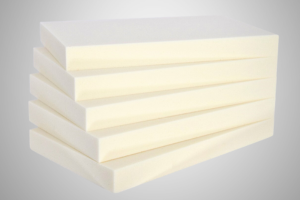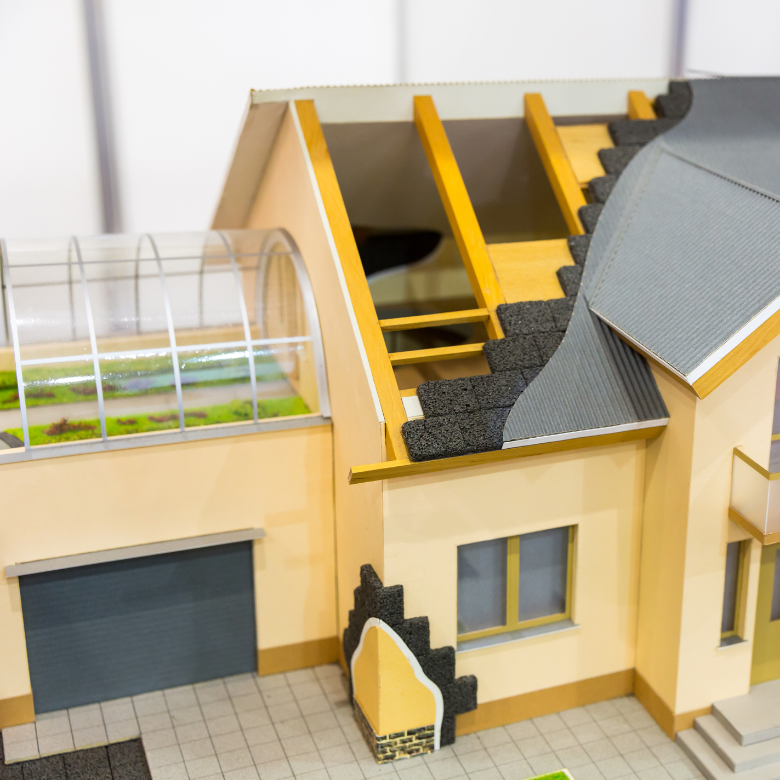Modern construction places great emphasis on energy efficiency and reducing heat loss in buildings. One of the key parameters that affects the thermal performance of buildings is thermal resistance. It is through the right choice of insulation materials with high thermal resistance that it is possible to significantly reduce heating costs and increase the thermal comfort of the occupants. What exactly is thermal resistance and how do you calculate it to choose the best insulation solutions?

What is thermal resistance?
Thermal resistance is a measure of a material’s ability to resist heat conduction. The higher the thermal resistance, the more difficult it is for heat to pass through a material, making it a better insulator. This value is the reciprocal of the thermal conductivity coefficient, denoted as lambda (λ), and is one of the key parameters considered in the design of building insulation. Higher thermal resistance means better thermal insulation, allowing less energy to be used to heat or cool the building.
The thermal resistance (denoted as R) is calculated using the formula: R= d/ λ where:
- d is the thickness of the material (in metres),
- λ is the thermal conductivity coefficient (expressed in W/m-K).
How do you calculate thermal resistance?
The calculation of thermal resistance requires knowledge of two basic parameters – the thickness of the material and the thermal conductivity coefficient. It is worth noting that different materials have different lambda values, which affects their insulating efficiency. For example, materials with a lower lambda coefficient, such as PIR boards and PUR foams produced by the PCC Group, have a higher thermal resistance compared to traditional insulation materials such as mineral wool or polystyrene.
To make the calculation process easier, many manufacturers and construction companies offer tools such as a thermal resistance calculator that automatically recalculates the R-value for a given material based on the parameters entered.
Heat conduction vs. heat transfer
To fully understand what thermal resistance is, it is also useful to look at the difference between heat conduction and heat transfer. Heat conduction is the process by which thermal energy moves through a material due to the temperature difference between its surfaces. This is one of the basic mechanisms of heat transfer and applies to any material. Heat transfer, on the other hand, refers to the total amount of heat that flows through a building element (e.g. wall, roof), taking into account all heat transfer mechanisms, including convection and radiation.
In practice, the thermal resistance of the insulation material is crucial in reducing heat transfer through the structural elements of a building. The higher the thermal resistance of the material, the lower the heat loss, which translates into lower heating bills and better thermal comfort.

Thermal resistance and heat transfer coefficient
Thermal resistance and heat transfer coefficient are closely related, but mean different things. The heat transfer coefficient (U) is a parameter which describes the amount of heat that penetrates 1 m² of a partition (e.g. a wall) in one second, with a temperature difference on both sides of the partition of 1K. A lower U-value means better insulating properties of the partition.
The heat transfer coefficient value can be calculated from the thermal resistance: U=1/RThis means that the higher the thermal resistance of the material, the lower the U-value, which indicates better thermal insulation of the partition.
Which materials have the best thermal resistance?
There are many insulation materials available on the market and choosing the right one depends on the specifics of the building, its location and the energy efficiency requirements. The most commonly used materials include:
- Styrofoam – a popular insulation material with medium thermal resistance. It is commonly used in external wall and foundation insulation.
- Mineral wool – offers good thermal insulation and additional benefits such as soundproofing and fireproofing properties. However, it requires a greater layer thickness compared to other materials in order to achieve an adequate level of insulation.
- PUR (polyurethane) foams – a modern insulation material that has a very low lambda coefficient, meaning that it has a high thermal resistance even at low thicknesses. PUR foams are used in both board and spray foam form.
- PIR boards – an even more advanced form of insulation than PUR foams. PIR panels have even better insulating properties, a low thermal conductivity coefficient and high durability. The PCC Group is one of the leading manufacturers of PIR panels and PUR foams, which are used in many sectors of the construction industry.

Thermal resistance – which is better?
The choice of material with the right thermal resistance depends on the specifics of the building project and the climatic conditions. In regions with harsh winters, where the demand for heat energy is high, it is worth investing in materials with the highest possible thermal resistance, such as PIR panels and PUR foams. These materials not only minimise heat loss, but also allow for a reduction in the thickness of the insulation layer, which can be crucial when space is restricted.
It is worth emphasising that the products offered by the PCC Group, including PIR boards and PUR foams, are characterised by some of the best insulation parameters on the market. Thanks to advanced production technology and high-quality raw materials, these panels not only provide excellent thermal insulation, but also durability and resistance to external influences. Therefore, when you choose insulation materials from the PCC Group, you can count on solutions that meet the highest standards of energy efficiency.
Thermal resistance and energy efficiency in buildings
In the context of increasing energy efficiency requirements for buildings, the correct choice of insulation materials with high thermal resistance is becoming a priority for investors and developers. The introduction of stringent energy efficiency standards, such as the requirements of the European Union’s Energy Performance of Buildings Directive (EPBD), obliges the use of materials with the best possible insulation performance. PIR boards and PUR foams, produced by the PCC Group, are one of the best solutions available on the market, as they combine a low lambda coefficient with durability and resistance to external conditions.
The use of modern materials such as PIR and PUR allows the thickness of the insulation layer to be reduced while maintaining high thermal efficiency. This means that you can get the maximum benefit from the insulation while saving space, which is especially important when retrofitting older buildings.
Thermal resistance is one of the key parameters affecting the energy efficiency of buildings. The higher the thermal resistance of the materials used, the lower the heat loss, which translates into lower energy consumption and higher thermal comfort. Thanks to products such as PIR panels and PUR foams manufactured by the PCC Group, investors and developers can achieve better thermal insulation results for their buildings, which has a direct impact on reducing operating costs and increasing the value of the property.
It is worth remembering that properly selected insulation materials are an investment that pays off in the long term through savings on heating and improved living comfort in buildings with the right thermal performance. Well-designed insulation, based on materials with high thermal resistance, not only reduces heat loss but also helps to maintain a stable indoor temperature, which is important in both summer and winter.
By offering advanced insulation solutions in the form of PIR panels and PUR foams, the PCC Group contributes to improving the energy efficiency of buildings, which is a key element in the implementation of construction projects that meet modern environmental and energy standards.
- https://www.rockwool.com/pl/inspiracje-baza-wiedzy/baza-wiedzy/efektywnosc-energetyczna/opor-cieplny-r-czym-jest/
- https://www.thermopedia.com/content/841/
- https://www.gov.pl/web/rozwoj-technologia/dyrektywa-w-sprawie-charakterystyki-energetycznej-budynkow-epbd